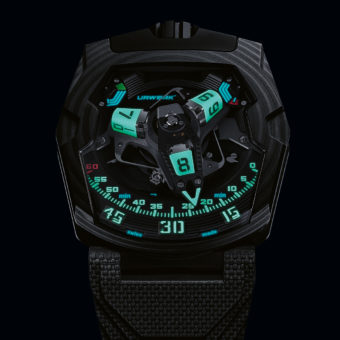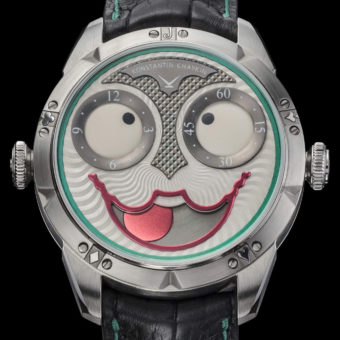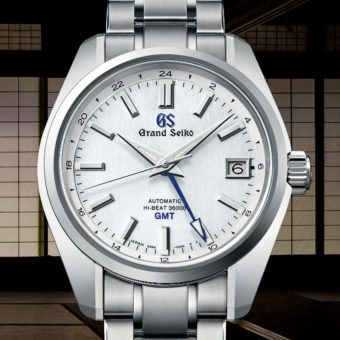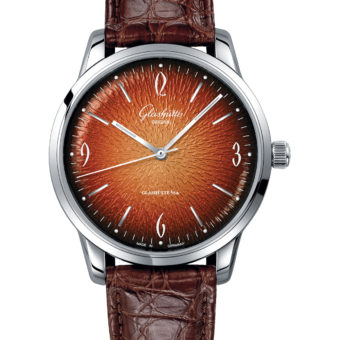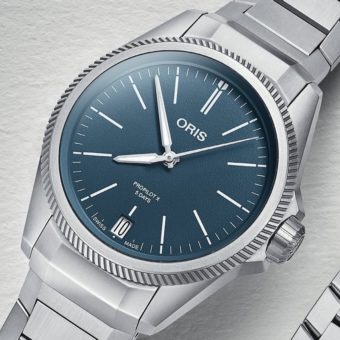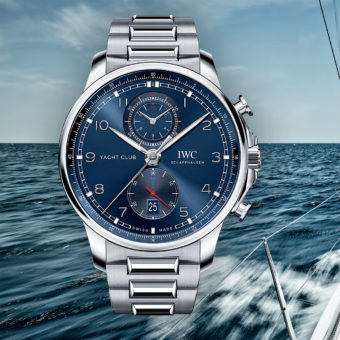
It started with the figure-eight-inspired central tourbillon HM1. Then came HM2, with flying buttresses and porthole dials. HM3 followed with rotating cones providing the time. Earlier this year came a redesigned HM3 with cones resembling the bulging eyes of a frog. Now, MB&F rolls out its latest model, the HM4, which makes its predecessors look downright conventional by comparison.

The HM4 is nicknamed the Thunderbolt, and its sleek, jet-engine-inspired design comes from the childhood passion for model aircraft of MB&F founder and creative force, Maximillian Busser. MB&F considers itself more a horological concept laboratory than a typical brand, and this timepiece, like those that preceded it, is the result of a collaboration between Busser and a small group of watch-industry specialists personally selected for the project.
In designing the HM4, MB&F founder Maximillian Busser was inspired by the model airplanes of his youth.

The movement, unveiled as a teaser at this year’s Baselworld watch fair in March, was made entirely from scratch, including its screws and regulator, according to MB&F, and is comprised of 311 components in total. The two parallel mainspring barrels hold 72 hours of power, which they transfer to the two pods, reminiscent of jet turbines, on either side through vertical gear trains. There are two small dials at the front ends of each pod, one displaying the hour and minute in a classic pilots’-watch style, and the other indicating the power reserve in the manner of a fuel gauge. At the rear end of each pod are the appropriate individual crowns, one to set the time and the other to “fill the fuel tank” — that is, wind the watch.
The Thunderbolt’s movement uses no outside parts. Two mainspring barrels in the top view receive their energy from the balance in the center and transfer energy to the two parallel pods. On the bottom, the centered battleaxe-shaped bridge looks like a microrotor.

The dial on the right displays the time; the one on the left indicates the power reserve. The case is designed for both these indicators to be perpendicular to the wrist for easy legibility.

In the center of the top side of the movement, and visible under a sapphire display panel, is the balance, supported by a streamlined cock and showing off its oscillating wheel. The bottom side of the movement, much of which is also revealed in sapphire windows, includes meticulous finishing and a bridge, molded in MB&F’s trademark “battleaxe” shape, which at first glance appears to be a microrotor. (The shape also pops up in the skeletonized hand for the power-reserve indicator.)
The middle part of the case is made of a single block of sapphire, and a sapphire window in the rear of the case displays the “kinetic art” of the moving balance.

The distinctive case combines Grade 5 titanium and sapphire in its three-part structure. The titanium rear section frames the balance and tapers into the two crowns at the end of the aerodynamically shaped pods. The middle section — milled from a solid piece of opaque sapphire and requiring more than 100 hours of machining and polishing — provides a 360-degree view of the movement (or “engine,” if you will). The front titanium section features the dual dials and articulated front lugs for comfort on the wrist. (Yes, despite being primarily a “kinetic sculpture,” according to MB&F, this watch is meant to be worn and used for practical purposes, as evidenced by the dials, which are perpendicular to the wrist for easy reading of the time and remaining power while driving or piloting a plane. The hour and minute hands are coated with SuperLumiNova for legibility in low light. In fact, despite its highly unorthodox design, this is the first MB&F “horological machine” that features a classic two-handed dial to indicate the time.)
The shape of the indicator pods are reminiscent of jet turbines. The articulated lugs are designed to add comfort on the wrist.

The watch — which boasts satin finishing and contrasting matte and polished surfaces — has other aviation-inspired touches, like the external screws that hold the case sections solidly together and keep the watch rigid. It measures 54 mm wide by 52 mm long and is 24 mm high. On the wrist, it is surprisingly lightweight (owing to the titanium parts); the movable, comfort-enhancing lugs are attached to a black, hand-stitched calfskin leather strap with a titanium-and-white-gold deployant buckle. The price you’ll pay for owning one of these “kinetic sculptures” is $158,000, and a total of only 100 pieces will be made, to be released over the course of three years. You may not be wearing the Thunderbolt in the cockpit of your own plane, but owning one of these will certainly put you in rarefied air.


